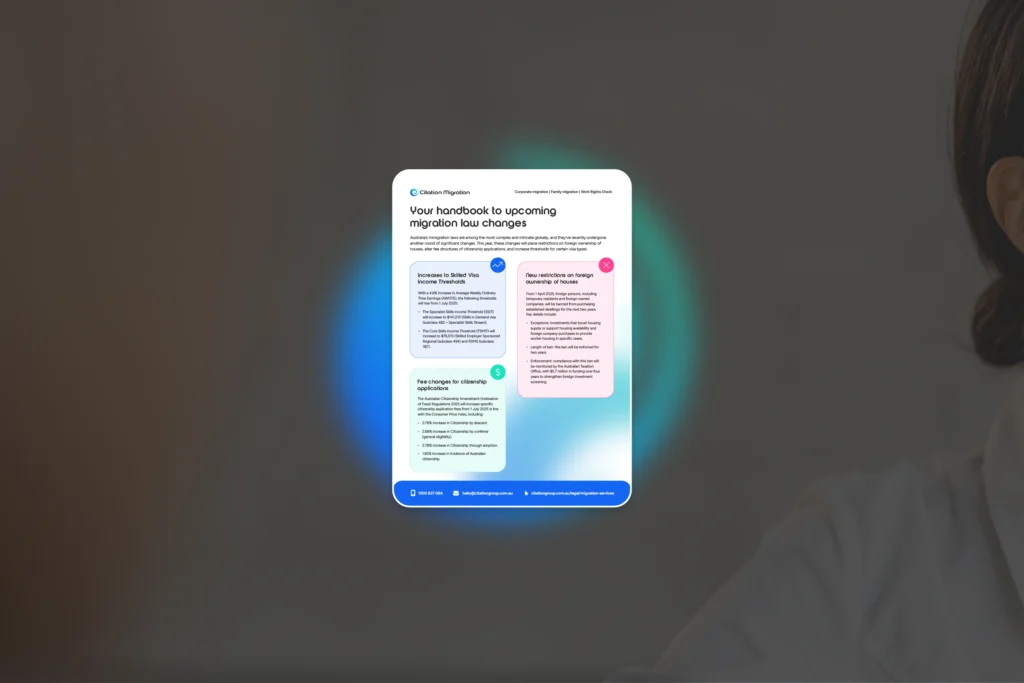
A recent case in the County Court of Victoria highlights the complexities of injuries in the workplace, especially when new accidents worsen existing injuries. This case highlights the challenges in distinguishing between the initial workplace injury and additional injuries that may affect an employee’s ability to work. In this article, we’ll cover the facts of the case, discuss the court findings, and provide tips for managing staff who have returned to work after an injury.
The initial workplace injury and its consequences
In March 2014, a worker suffered a serious injury while working at his family’s meat business. He fell backwards from a stepladder in a cool room, resulting in a concussion and a neck injury that required ongoing pain management. Despite the severity of his injury, the worker returned to work the next day with significantly reduced hours, limited to just 12 per week.
Over the next few years, the worker’s injuries required extensive treatment. By June 2016, he underwent cervical fusion surgery and later stopped working for an extended period. Medical records showed that even before May 2018 (the date of the transport accident as discussed below), he’d reported persistent pain in both his cervical and lumbar spine. Ultimately, he settled his workplace injury claim in October 2019 for over $500,000 while retaining statutory benefits.
The additional injury and its impact
In May 2018, a transport accident worsened the worker’s injuries. Medical documentation revealed that the worker had a long-standing history of lumbar pain dating back to 1997, but his condition had significantly declined following both the 2014 workplace injury and the transport accident.
The treating neurosurgeon and spinal surgeon noted that the worker’s daily activities, including his social life, had been severely disrupted due to a combination of pain, medication side effects, and concerns about re-injury. The worker required ongoing medical treatment and pain management as a result of the transport accident, which intensified his physical limitations.
What accommodations were made?
Recognising the worker’s difficulties, his family created a modified Quality Assurance role for him in September 2022, allowing him to work approximately 20 hours per week. This arrangement, however, lasted only seven months. Following another surgery in April 2023 – a C6-7 cervical spinal fusion, the worker was no longer able to continue his employment.
The Transport Accident Commission acknowledged that medical evidence supported the conclusion that the worker had no current work capacity. Medical assessments confirmed that the transport accident had significantly worsened his condition and overall quality of life.
What did the court decide?
The Court said, “injuries sustained on separate occasions must generally be assessed separately to determine whether each injury individually, is a serious injury. This means that where a plaintiff brings proceedings for a serious injury in the form of an aggravation of an earlier injury, the court must examine whether the later aggravation is itself a serious injury.
The measure of such aggravation as serious injury is by undertaking an assessment of the consequences attendant a plaintiff from the subsequent injury and not by an accumulation method that includes the consequences from the later injury on top of or added to the first injury.”
The Court ultimately ruled that the transport accident had caused a serious aggravation of the worker’s pre-existing conditions, stating that the aggravation was “very considerable and more than significant or marked and is long-term.”
WHS considerations for employers
While the worker in this specific case wasn’t able to continue working, this won’t always be the case. In some instances, the employee will be ok to continue working after they’ve recovered. When this happens, there are a few things employers need to consider:
Workplace injury management
Employers must ensure that injured workers receive appropriate medical support and reasonable accommodations to continue working where possible.
Returning to work after injury
Even when an injured worker resumes work in a modified capacity, ongoing medical assessment is crucial to ensure their role remains suitable.
Risk assessment and prevention
Businesses should implement proactive safety measures to prevent further workplace injuries and support employees with pre-existing conditions to minimise further risk.
Compensation and liability considerations
Employers and insurance providers must carefully assess medical evidence to determine responsibility and entitlements.
A supportive environment is important
Employers must recognise the long-term implications of workplace injuries, particularly when followed by additional accidents. By fostering a supportive work environment, prioritising safety, and implementing robust return-to-work strategies, businesses can mitigate risks while ensuring that injured employees receive the necessary support to maintain their employment and well-being.
Citation Safety can help
Inside our safety software, you’ll find tailored workflows that can assist in identifying potential workplace hazards, documenting incident details, and managing an individual’s return to work following a workplace accident. Even if you’re careful, accidents can and do happen. And when they happen, we’re here to help. Our Workplace Health & Safety (WHS) experts are available 24 hours a day via the Safety Advice Line.
About our Author
Jack Bowkett is a Workplace Health and Safety Consultant at Citation Group. He has an interest in all things safety-related and regularly provides pragmatic advice on how businesses can comply with their WHS obligations and create a good working environment.








